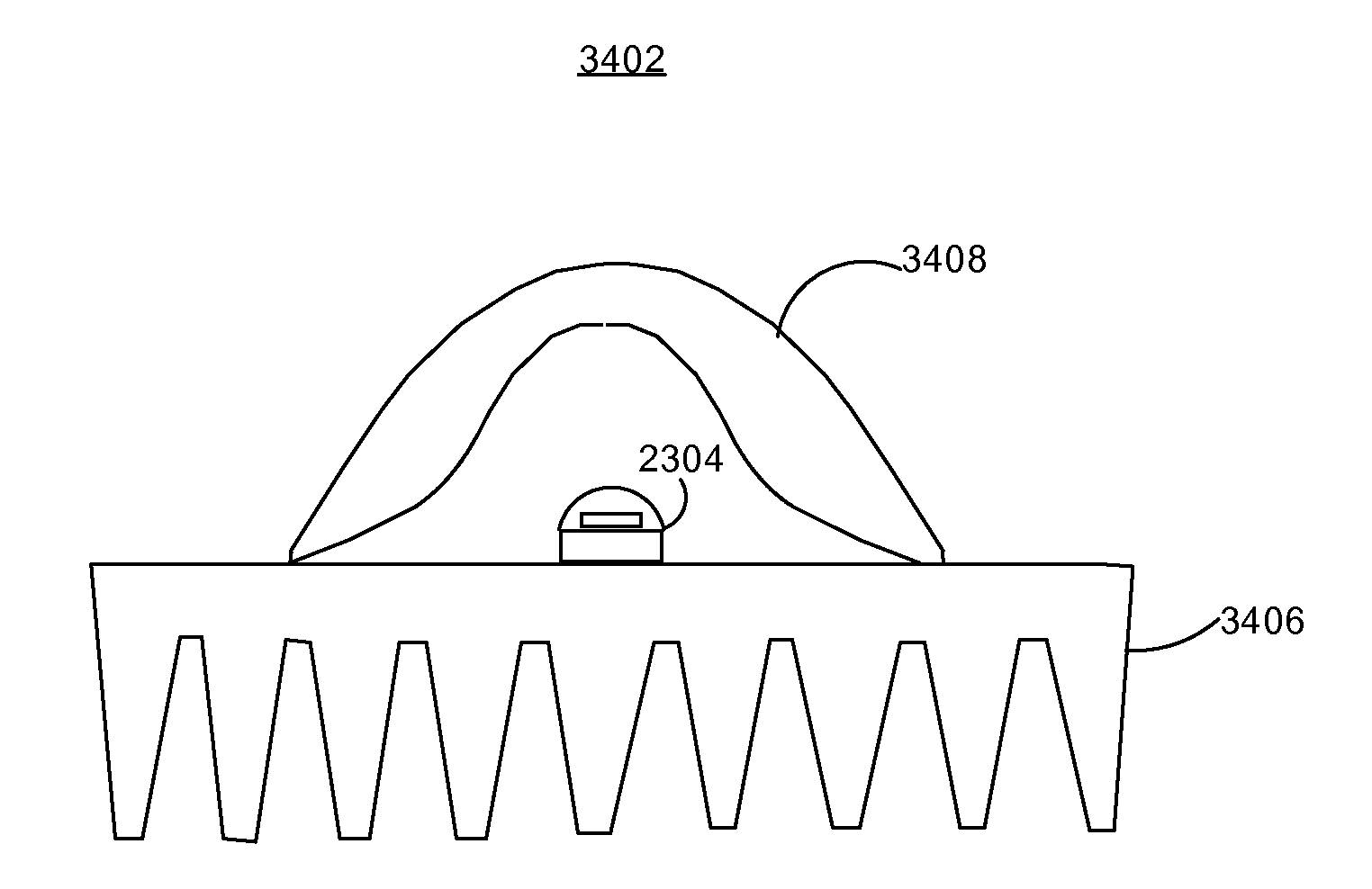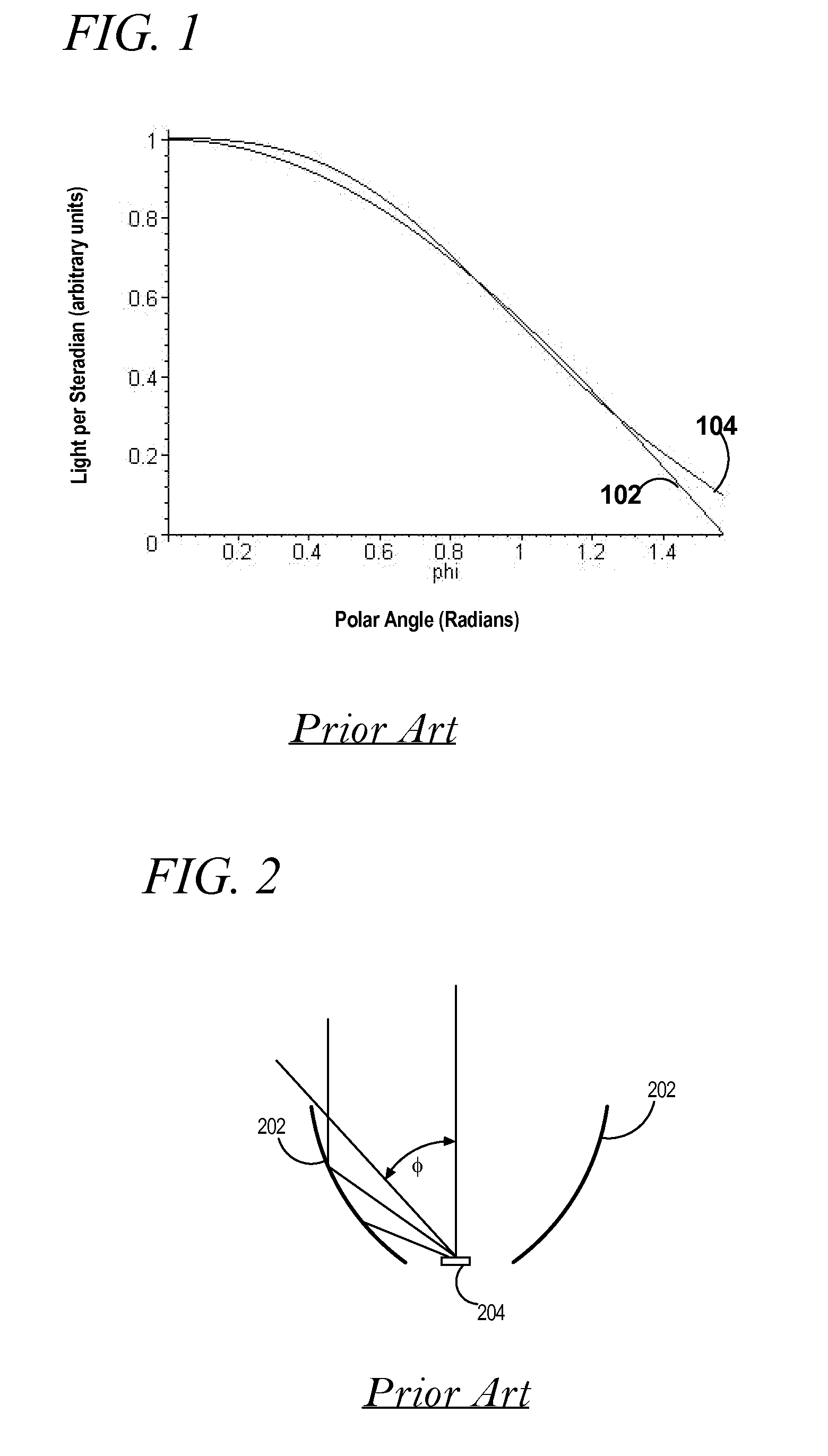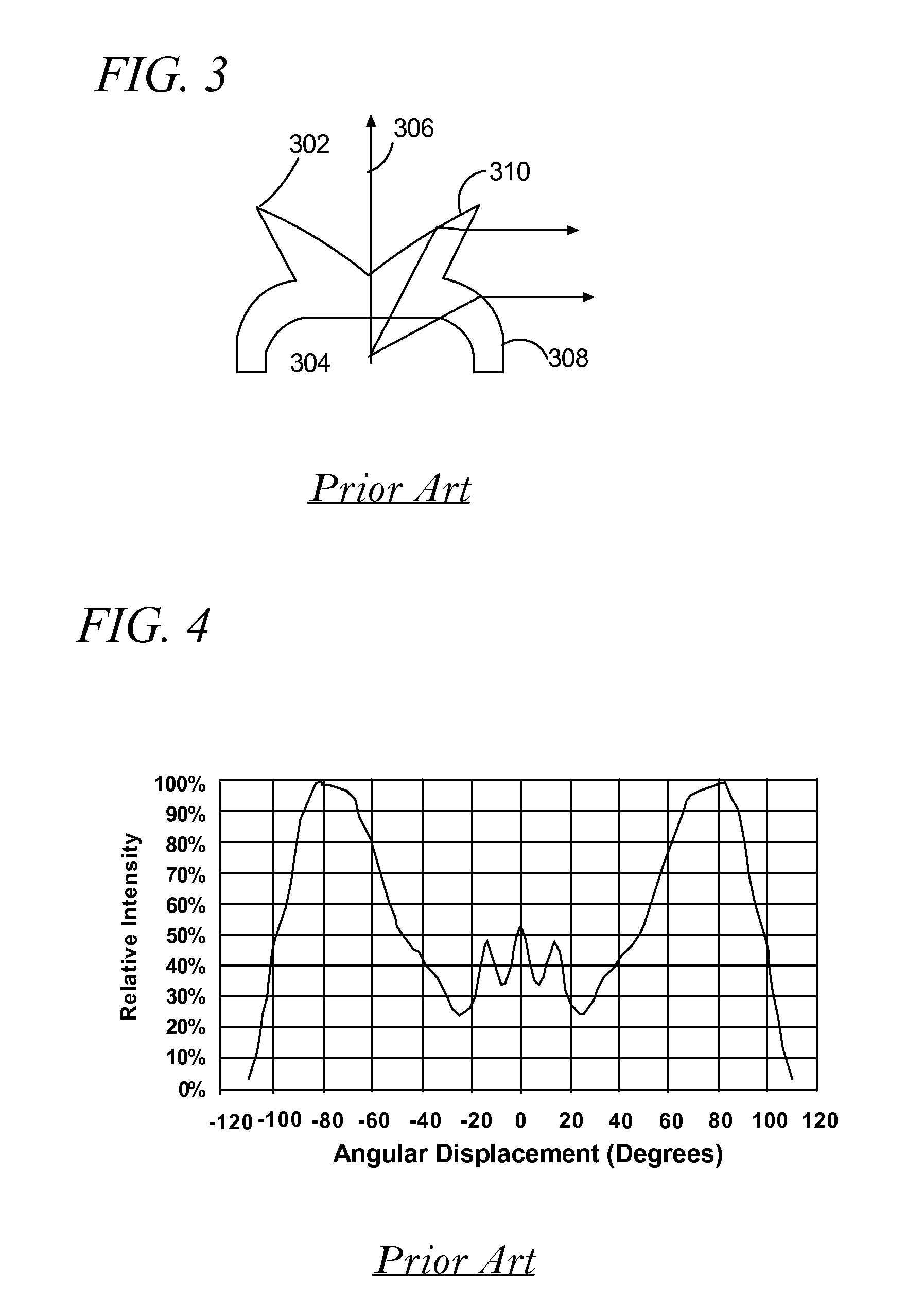Illumination lenses including light redistributing surfaces
- Summary
- Abstract
- Description
- Claims
- Application Information
AI Technical Summary
Problems solved by technology
Method used
Image
Examples
third embodiment
[0087]FIG. 27 Is a plot of the generatrix 2702 of the surface of a primary lens 2700 according to the invention. The third lens is designed to distributed light uniformly within the polar angle range of 0.0 to 60.0 degrees. The table for the lens shown in FIG. 27 is:
TABLE XPhi1_MIN0.0 radiansPhi1_MAX1.57 radians (90 degrees)Phi2_MIN0.0 radiansPhi2_MAX1.047 radians (60 degrees)rad_in(phi1)Plot 104 Quasi Lambertianrad_out(phi2)=1.0 (uniform goal)r1_ini(Phi1_MIN)3.0n11.497n21.0
fourth embodiment
[0088]FIG. 28 shows generatrixes of surfaces 2802, 2804, 2806, 2808 of a lens 2800 with (TIR) wings according to the invention. The TIR wings include a TIR reflecting surface 2802 which reflects light through an exit surface 2804. A central refracting surface 2806 is defined by DE3. The central refracting surface 2806 handles an angular range of light up to a polar angle value phi1_switch and the TIR reflecting surface 2802 handles light beyond phi1_switch. A wing inner surface 2808 merely connects the exit surface 2804 and the central refracting surface 2806. DE4 is given below
DE4∂∂φ1r1=r1cot(-12φ1-12arcsin(n2sin(-φ2+phi_exit)n1)+12phi_exit)
[0089]where, phi1, r1, phi2 are the same as defined above; and
[0090]phi_exit is the angle between the upward facing surface normal ‘N’ to the exit surface 2804 and the Z-axis (measured in the clockwise direction, (see FIG. 28);
[0091]with initial condition r1_w_ini.
[0092]Table IV shows the inputs and radiant intensity functions for the lens 2800....
PUM
 Login to View More
Login to View More Abstract
Description
Claims
Application Information
 Login to View More
Login to View More - R&D
- Intellectual Property
- Life Sciences
- Materials
- Tech Scout
- Unparalleled Data Quality
- Higher Quality Content
- 60% Fewer Hallucinations
Browse by: Latest US Patents, China's latest patents, Technical Efficacy Thesaurus, Application Domain, Technology Topic, Popular Technical Reports.
© 2025 PatSnap. All rights reserved.Legal|Privacy policy|Modern Slavery Act Transparency Statement|Sitemap|About US| Contact US: help@patsnap.com



